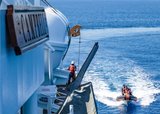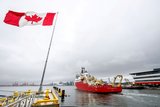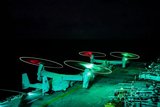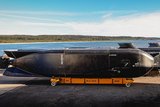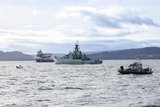Australian frigate risk reduction studies signed
The Australian government has signed an agreement with Navantia for the Risk Reduction and Design Study (RRDS) Phase for the Department of Defence's (DoD's) SEA 5000 Future Frigate programme, the company announced on 29 August.
The government has entered into similar agreements with BAE Systems and Fincantieri. The agreements come under the DoD's Competitive Evaluation Process (CEP) for the programme.
According to Navantia, the agreement will see the company engage in processes for approximately one year that will allow the DoD to assess the risk, capability and other matters associated with Navantia’s proposed ship design.
Back in April 2016 the government granted first pass approval for the Future Frigates. Three designers – BAE Systems with the Type 26 Frigate; Fincantieri with the FREMM Frigate, and Navantia with a redesigned F100 – were short-listed to refine their designs. The frigates will all be built in Adelaide, incorporating the Australian-developed CEA Phased-Array Radar.
The CEP is scheduled to return second pass approval in 2018, which will allow for construction to commence in Adelaide in 2020. The programme is estimated to be worth more than $35 billion.
More from Naval Warfare
-
![How the Anduril-HHI autonomous ship plan fits in with the US Navy’s MASC programme]()
How the Anduril-HHI autonomous ship plan fits in with the US Navy’s MASC programme
The new modular vessel is expected to be developed for both commercial and defence use, with a heavy focus on production speed and mission flexibility.
-
![Indo Pacific 2025: Autonomous systems reigned but can the Australian Defence Force afford it?]()
Indo Pacific 2025: Autonomous systems reigned but can the Australian Defence Force afford it?
Multiple autonomous systems and technologies were on display at this year’s Indo Pacific, but questions remain over how the Australian Department of Defence will balance the books.
-
![How the UK Royal Navy is powering up its hybrid fleet to combat new threats]()
How the UK Royal Navy is powering up its hybrid fleet to combat new threats
Since it announced its move towards a new “hybrid navy” earlier this year, the force has announced a number of new uncrewed technologies in the works.
-
![US and UK to begin Trident II D5 Increment 8 in October 2026]()
US and UK to begin Trident II D5 Increment 8 in October 2026
Trident II D5 Increment 8 will involve improvements to the shipboard navigation subsystem for the US Ohio and Columbia and the UK Dreadnought and Vanguard submarine classes.







